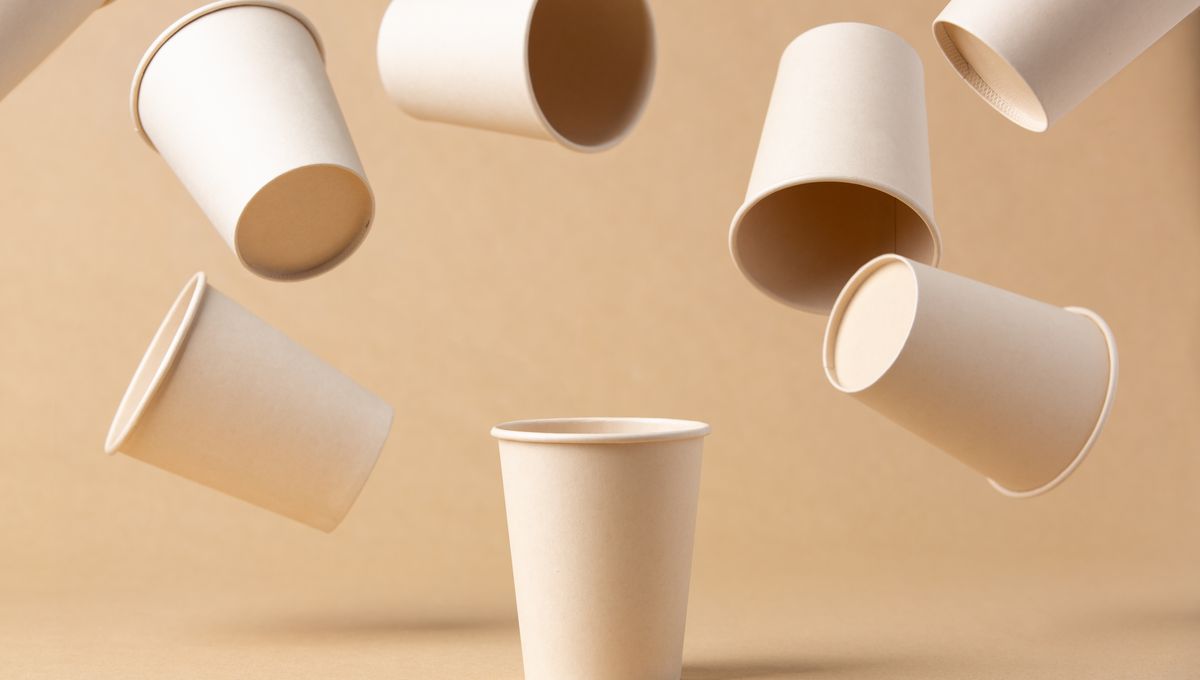
Paper cups and straws are fast becoming the norm – gone are the days of plastic straws in pitchers, now replaced by their paper siblings. It might be a bit annoying when the rim of a paper cup or straw goes soggy, but at least it’s helping the environment, right? Two new studies suggest that paper tableware may actually be just as harmful as its widely banned plastic counterpart.
One team of researchers used butterfly mosquito larvae to determine the potential impact of paper cups on aquatic life. “We left paper cups and plastic cups in wet sediment and water for a few weeks and followed how the leached chemicals affected the larvae,” explained author Bethanie Carney Almroth in a statement.
The paper cups they used were lined with polylactic acid (PLA). PLA is widely used as a biodegradable alternative to traditional plastic linings, protecting its paper surroundings from absorbing water. However, the researchers discovered that it could also be toxic.
“All of the mugs negatively affected the growth of mosquito larvae,” said Almroth. Even in sediment and water where the paper cups had only been leaching for a week, the mosquito larvae experienced reduced size and developmental delay. These effects tended to increase the longer the paper cups had been left to degrade.
PLA-containing cups aren’t the only problem. In another study, scientists looked at the impact of paper straws and found perfluorinated alkylated substances, or PFAS. Better known as “forever chemicals”, PFAS have many historical uses, but are now widely recognized as bad for the environment and human health.
The Belgium-based research team tested 39 different brands of straw available for sale in the country. This included not just paper, but bamboo, glass, steel, and the original environmental menace, plastic. Using a technique called Ultra Performance Liquid Chromatography-Mass Spectrometry, or UPLC-MS/MS if you’d like to save your breath, they analyzed the levels of PFAS in each of the straws.
They found that paper straws were the most likely to contain PFAS, with 90 percent testing positive. The other materials didn’t get away scot-free either; all but the stainless steel straws were discovered to have PFAS. In another kick in the teeth for the straw family, the globally banned perfluorooctanoic acid (PFOA) was the most frequently detected PFAS.
However, it should be mentioned that it’s not clear where the PFAS in the straws came from. It’s possible they may have been purposely introduced to make the straws water-resistant. Given their prevalence and sticking power in the environment, it’s also feasible that they found their way into the plants used whilst they were growing, or the water used in the manufacturing process.
Either way, both studies suggest keeping a watchful eye on paper straw and cup consumption.
The study on paper cups is published in Environmental Pollution, while the study on paper straws is published in Food Additives & Contaminants: Part A.
Source Link: Paper Cups And Straws Could Be Just As Bad As Plastic